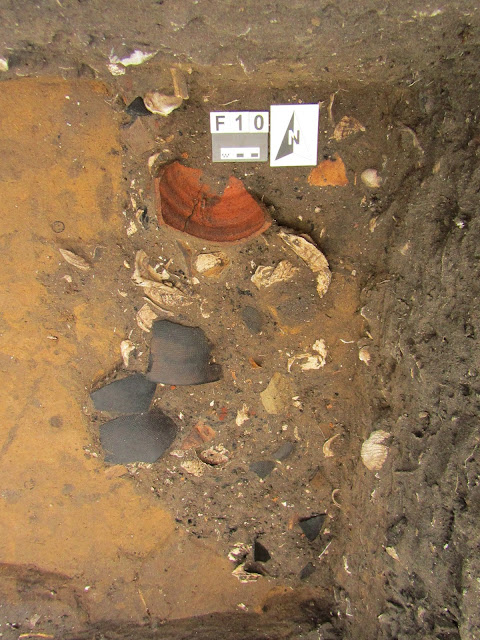Trash Talk
 |
Trash doesn't lie. If we rummaged through our neighbor's trash (NOT a recommendation!) you could potentially make some discoveries. A person could present themselves as a healthy eater, moderate drinker and conscientious recycler. Yet, their trash might reveal McDonalds wrappers, liquor bottles and high volumes of plastic. Perhaps they just had a party? But if we could see the layers and layers of trash throughout their lifetime, let alone their ancestor's lifetimes, it would tell us a lot!
This is exactly what archaeologists do. By studying the materials people left behind (their material remains), archaeologists piece together the past.
My recent inaugural trip to the local dump got me thinking..
One
thing we have in common with past peoples over all time is that we
produce trash! Our culture's current garbage is comprised of a wide
array of containers and obsolete items. Someone picks it up weekly and
it goes to a centralized location.
People from historic times usually threw their trash into an old well, a privy or in an intentional trash pit.
 |
| An excavated 16th Century trash pit found in downtown St. Augustine, FL (photo by |
Archaeologists
were very excited to find the broken ceramics in the above trash pit.
Will future archaeologists be excited to one day find these broken
ceramics in today's trash pit?
Many of Florida's precontact people piled their trash (comprised primarily of shells and animal bones). Over the centuries, these trash pile layers created huge mounds
(middens).
 |
| oyster and clam shells spilling out of Green Mound |
Today, we pile our trash in a similar way.
 |
| today's trash mound |
(If you're wanting more information on Green Mound, check out FPAN's famous previous blog: Green Mound: Millions of Meals.)
The Tucson Garbage Project (or Garbology Project) pioneered the academic study of modern trash. Dr. William Rathje and his students at The University of Arizona studied Tuscon residents' trash to examine their patterns of consumption. Not surprisingly, the information people revealed about their consumption habits did not jive with the evidence found in their garbage!
 |
| Student sorting through migrant's trash (phot by Arizona Daily Star) |
This study confirmed that history could write one thing, but the ground might reveal another. There is little written about enslaved and marginalized people of the past (they didn't get to write the history books!) and none written about prehistoric (precontact) peoples. Often the only way to discover anything about people is through their material remains.
If you want to dig deeper into the trash, read RUBBISH! The Archaeology of Garbage by William Rathje and Cullen Murphy.
Text and Photos (except where noted) by FPAN Staff, Robbie Boggs




